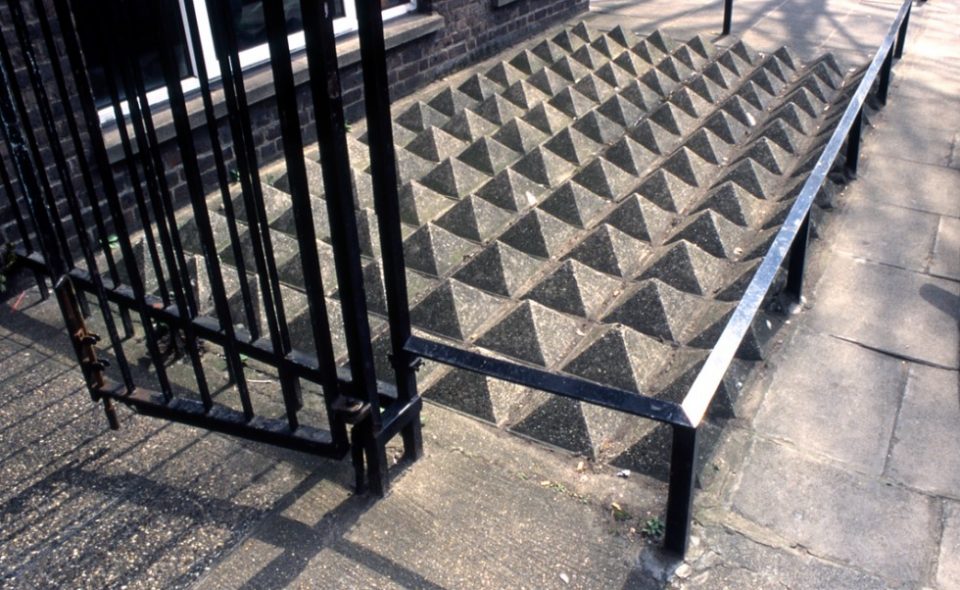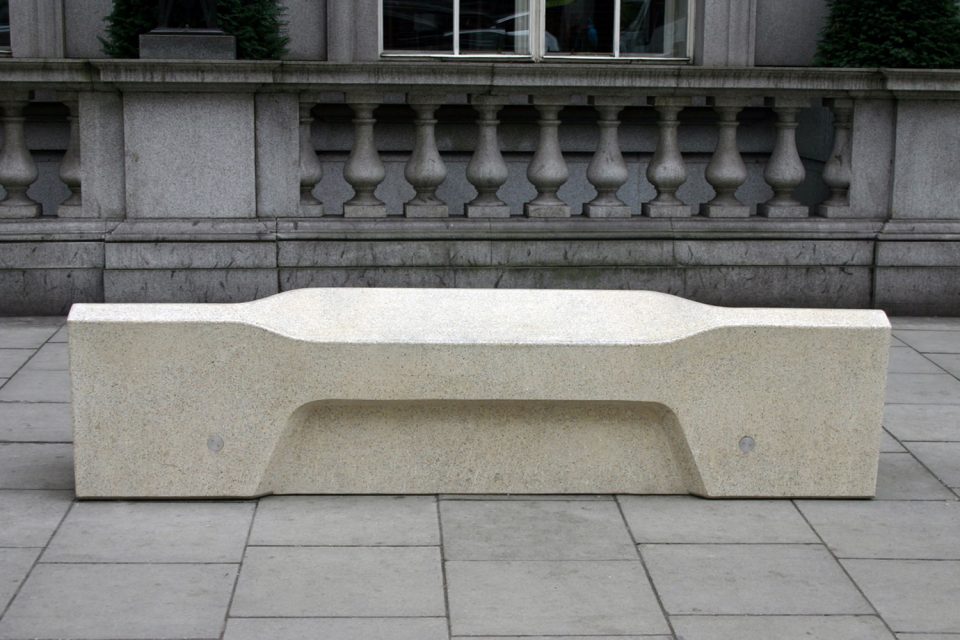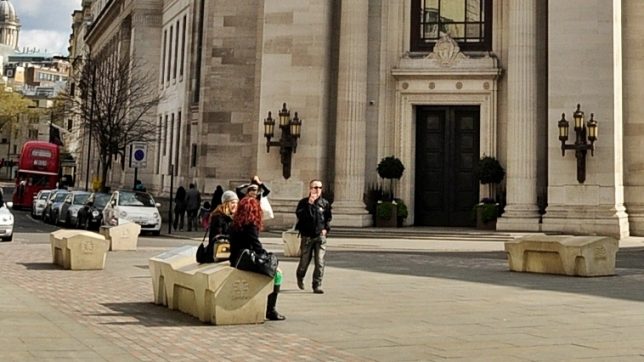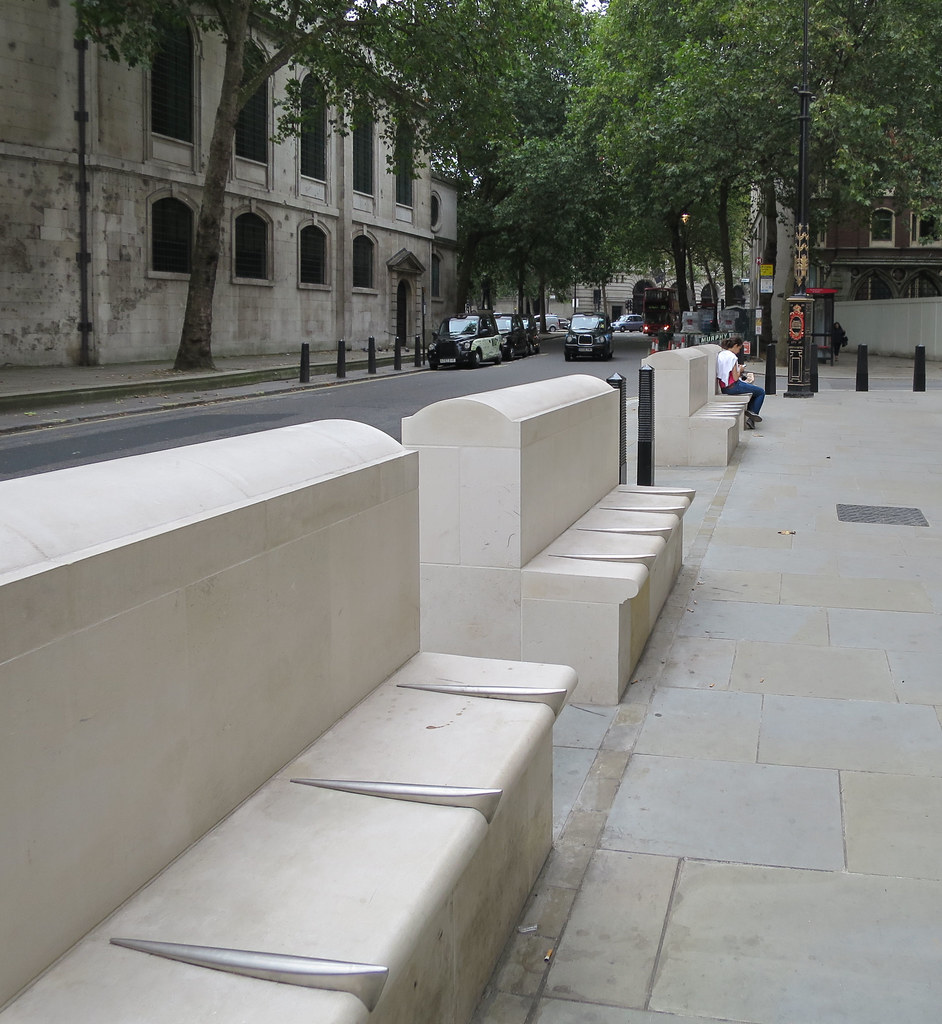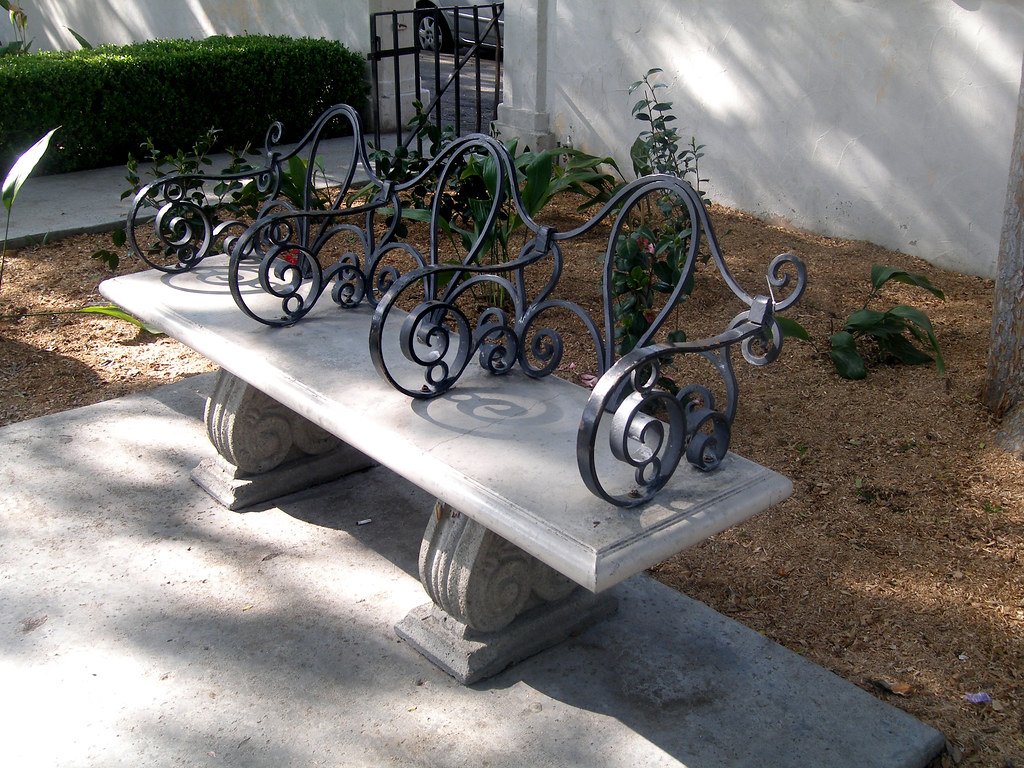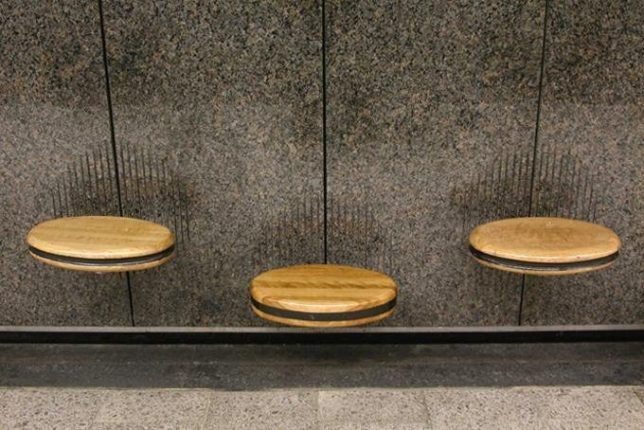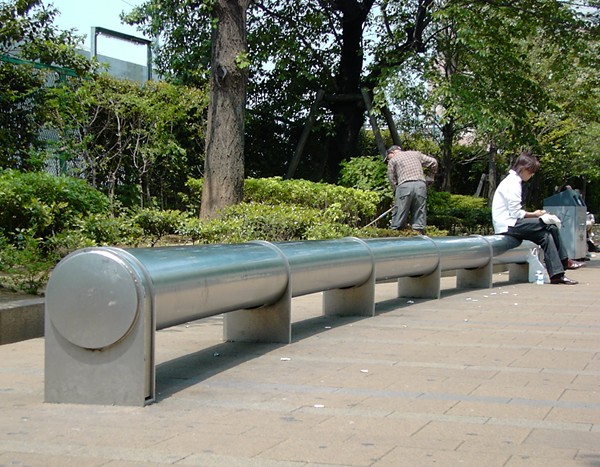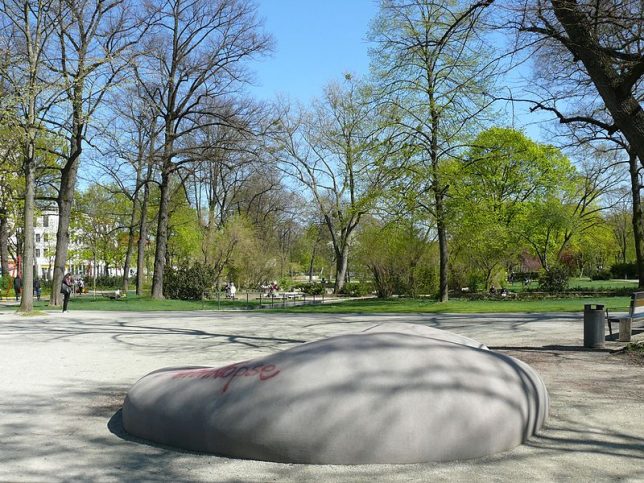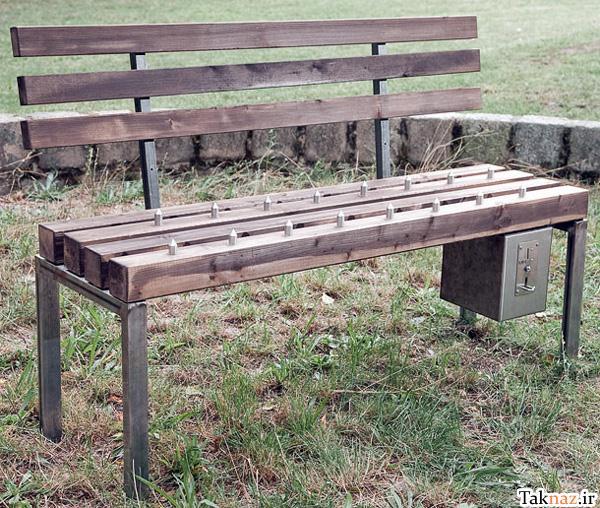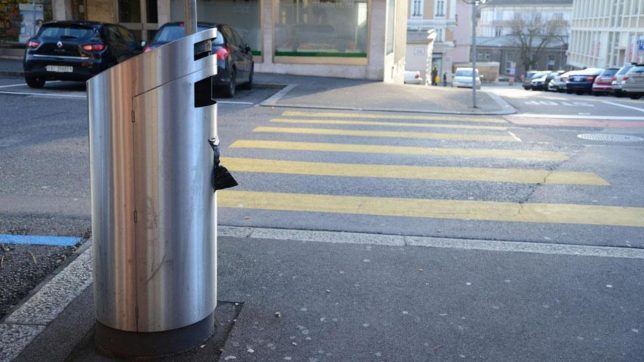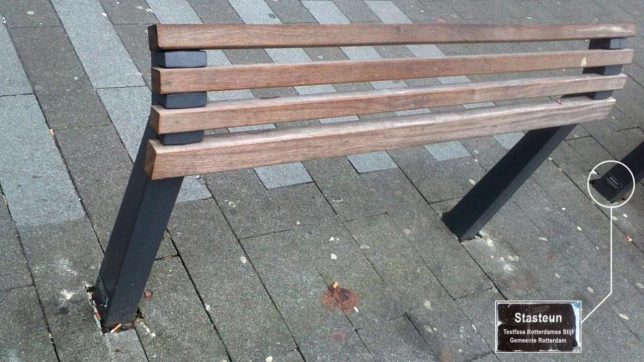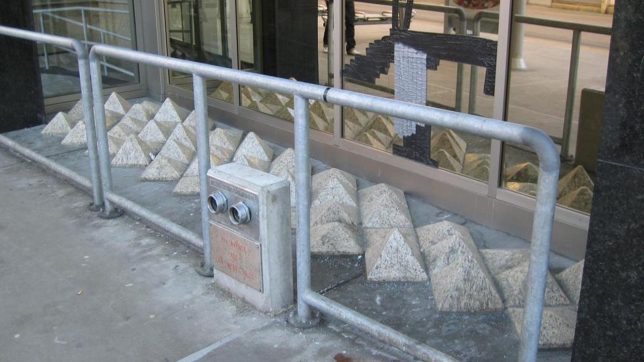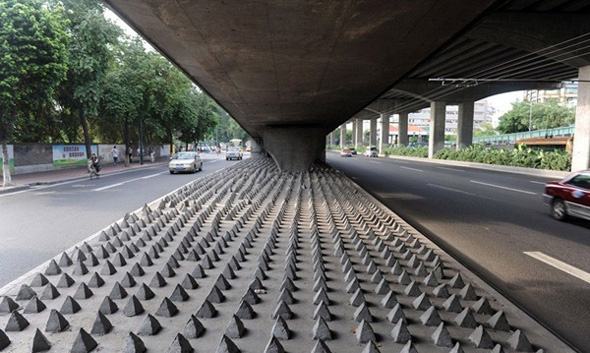It’s not just you – that bench in your city is designed to be uncomfortable on purpose. Armed with a loose definition of what it means to ‘loiter,’ intentionally hostile and sometimes downright sadistic urban design prioritizes separating ‘undesirables’ from city residents deemed more deserving. But these designs aren’t just inhumane – they have a negative practical and psychological effect on virtually everyone who spends time in public spaces. Can you imagine how different our cities could feel if they welcomed us, made us comfortable, asked us to stay a while and treated us like we actually live here?
Benches That Prevent Laying Down
The Camden Bench hates you. Seriously. It isn’t just a vaguely Brutalist block of concrete with a surface faceted for the sake of aesthetics. It’s the public furniture equivalent of a finger wagging in your face. Commissioned by the Camden London Borough Council and installed in 2012, it boasts of its ability to deter a grand total of 22 behaviors, including sleeping, skateboarding, canoodling, drug dealing (what?), littering, graffiti and theft. Its solidity makes it too heavy to move, its angles make it uncomfortable, it has no crevices and it’s coated in a waterproof anti-paint coating.
In a masterful stroke of smirking condescension, its manufacturer, UK-based Factory Furniture, calls it “a more inclusive place to sit,” noting that its indentations are at different heights. Sure. But where there’s a will, there’s a way, and skateboarders have already proven the marketing materials wrong, as seen in a video at The Guardian.
But other bench designs simply insert armrests and other objects, ostensibly to ‘separate the seats.’ We all know what they’re really for – preventing anyone from laying down. Cities criminalize homelessness and ghettoize low-income residents in an attempt to conceal poverty under the guise of making public areas cleaner and safer while the machinery that creates these social and economic conditions in the first place churns away. Furthermore, these designs don’t distinguish between houseless people and other city residents who might be ill, disabled, pregnant, elderly or just tired after a long bike ride. So who are they for?
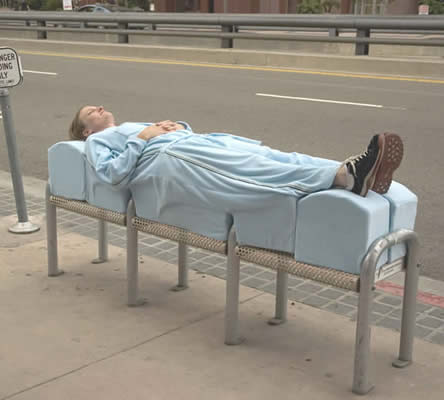
The Archisuit by artist Sarah Ross is one example of ways in which city residents fight back against these measures. “Archisuit consists of an edition of four leisure jogging suits made for specific architectural structures in Los Angeles. The suits include the negative space of the structures and allow a wearer to fit into, or onto, structures designed to deny them.”
(images via Wikimedia Commons, Factory Furniture, Flickr Creative Commons, Sarah Ross)
Public Seating ‘Alternatives’
If you’re a small person, you might be able to rest a single butt cheek on the wooden oval stools at Montreal’s Laurier Station. If you’re not, the most these ‘seats’ can offer you is a momentary place to sort of awkwardly lean against the wall. In Tokyo, a tubular stainless steel bench that gets dangerously hot in summer and freezing in the winter certainly won’t let you settle in for long. Some parks have installed giant boulders in place of benches – good luck taking a nap on one of those.
A book called Unpleasant Design by Selena Savic and Gordan Savicic chronicles all of these awkward seats and other ways in which public spaces are made intentionally uncomfortable, modified to deter certain activities or otherwise created to manipulate us. Examples they’ve gathered include decorative ‘picket fences’ around public landscaping that are really spikes, boulders placed beneath highway overpasses, trash cans with tiny openings and even benches with studs built right into the seat that only retract for a short period if you insert some coins into a slot. The latter started as a satirical joke by sculptor Fabian Brunsing, but Chinese officials didn’t see the humor, copying the design in Shandong’s Yantai Park.
